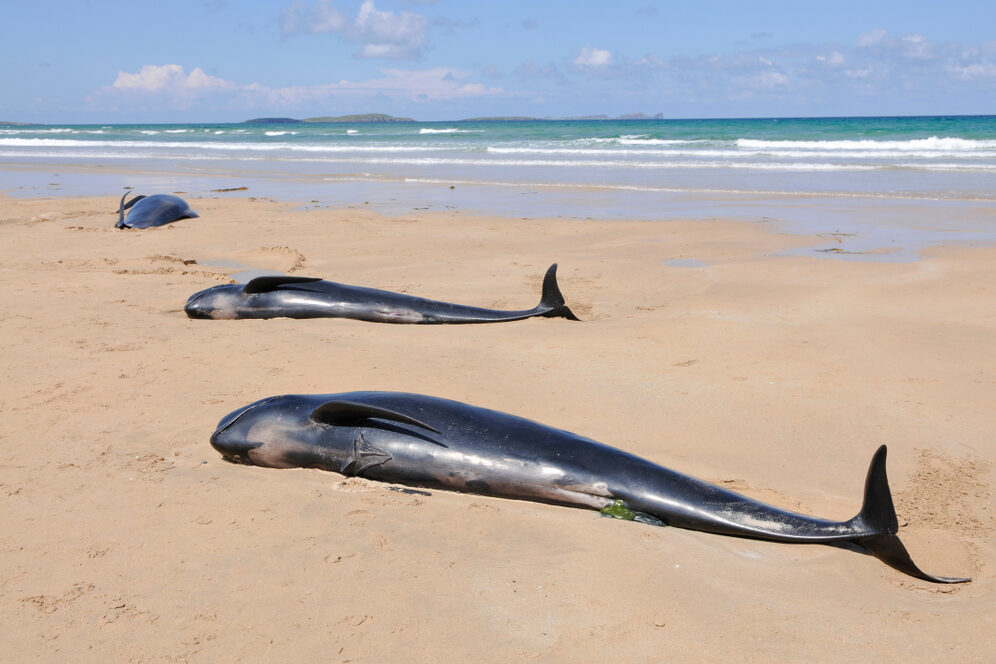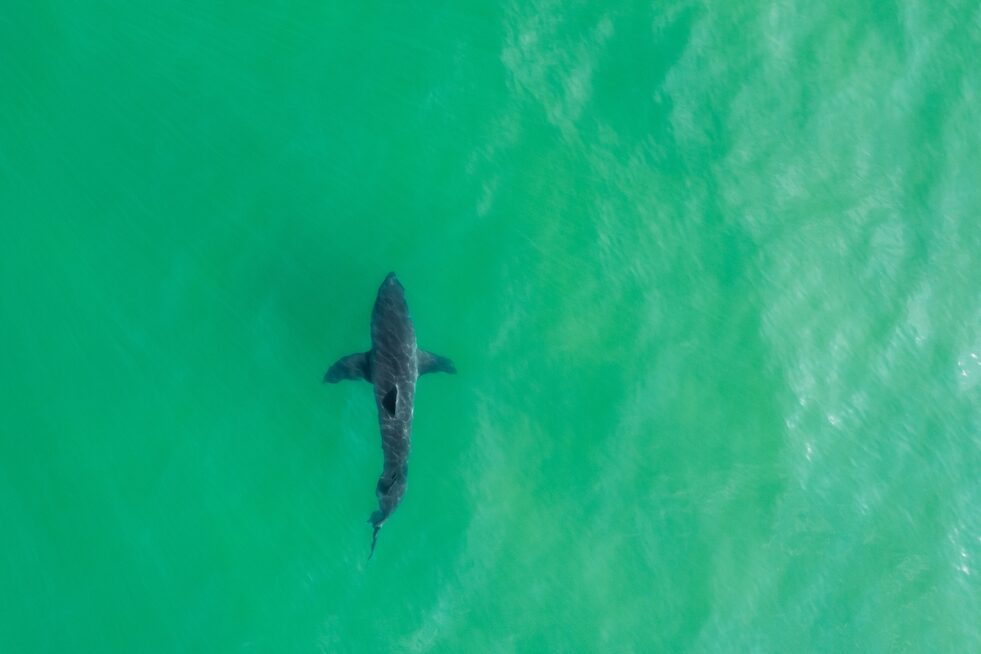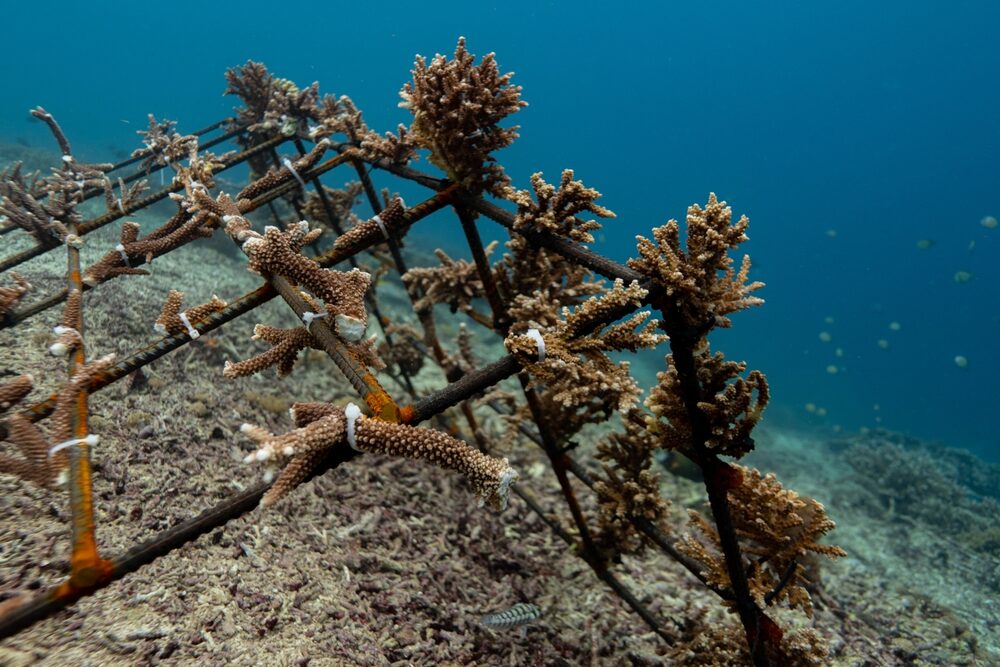1. The Mass Whale Strandings That Leave Scientists Stumped

Every year, reports of mass whale strandings seem to increase, leaving marine biologists searching for answers. From the shores of Tasmania to the beaches of Cape Cod, hundreds of whales—sometimes entire pods—wash ashore, unable to return to the ocean. While these events have been recorded for centuries, the recent surge in frequency and scale has raised concerns. Some scientists point to naval sonar disrupting their navigation, while others suggest shifting ocean currents are confusing migration routes. A heartbreaking example occurred in 2020 when over 450 pilot whales beached themselves in Australia, marking one of the largest strandings in history.
The reality is that no single factor explains these events. Climate change is warming the oceans, affecting whale food sources and forcing them into unfamiliar waters. Pollution, particularly microplastics and heavy metals, may weaken their immune systems, making them more vulnerable to disease and disorientation. Even ship strikes are a growing issue, as increasing global trade means more vessels in key migration areas. While conservation groups work to rescue stranded whales, the deeper problem remains unsolved. Are these strandings a warning sign of greater oceanic distress, or are we just now beginning to understand the extent of human impact on marine life?
2. Sea Star Wasting Syndrome: When the Ocean’s Arms Start Melting

Imagine walking along the tide pools, watching a colorful sea star slowly move across the rocks. Now, picture that same sea star suddenly developing lesions, its arms disintegrating before your eyes. This nightmare scenario has become a reality across the Pacific coast, where millions of sea stars have died from a mysterious illness known as Sea Star Wasting Syndrome. Once-healthy starfish seem to dissolve within days, leaving behind nothing but scattered remains. The outbreak first gained attention in 2013, but a decade later, the problem persists. Some species, like the sunflower sea star, have nearly vanished from entire ecosystems.
Scientists have linked this devastating disease to a combination of factors, including rising ocean temperatures and a virus that may have always existed but has been triggered into overdrive by climate stress. The loss of sea stars isn’t just a tragedy for tide pool explorers—it’s a crisis for marine ecosystems. These creatures are keystone species, playing a crucial role in controlling sea urchin populations. Without them, kelp forests, which provide shelter for countless marine animals, are rapidly disappearing. While researchers work to breed and reintroduce sea stars, the bigger issue remains: how much of this devastation is reversible, and how much is a symptom of a rapidly changing ocean?
3. The Silent Extinction of Sharks: Why Our Oceans Are Losing Their Apex Predators

Sharks have ruled the oceans for over 400 million years, but today, they are vanishing at an alarming rate. According to Forbes, global shark populations have declined by more than 70% in just the last 50 years. This dramatic drop is largely due to overfishing, habitat destruction, and the high demand for shark fins in certain markets. Every year, millions of sharks are caught, often just for their fins, leaving them to die slowly in the water. But the disappearance of sharks isn’t just a problem for them—it’s a crisis for the entire marine ecosystem.
As apex predators, sharks play a crucial role in maintaining balance in ocean food chains. Without them, populations of prey species like rays and smaller fish explode, which in turn can devastate coral reefs and seagrass beds. A prime example is the decline of great white sharks off the coast of South Africa, which has led to an overpopulation of seals and disruptions in local fisheries. Scientists warn that if shark populations continue to plummet, the cascading effects on marine life will be irreversible. Conservation efforts are in place, from marine protected areas to bans on shark finning, but will they be enough to save these ancient guardians of the deep?
4. The Vanishing Coral Reefs: A Bleached Graveyard Beneath the Waves

Once teeming with life, coral reefs across the world are turning into ghostly white graveyards. Coral bleaching, caused by rising ocean temperatures and pollution, has led to the rapid decline of these crucial underwater ecosystems. When corals become stressed by warm water, they expel the symbiotic algae that provide them with nutrients and color, leaving them pale and vulnerable. If the stress continues, the corals die, and with them, entire marine communities collapse. The Great Barrier Reef, once one of the most vibrant ecosystems on Earth, has experienced repeated mass bleaching events, and scientists fear it may not fully recover.
Coral reefs support 25% of all marine life, providing shelter and food for countless species, from tiny fish to massive sea turtles. But their loss isn’t just an environmental tragedy—it’s an economic disaster. Coastal communities that rely on reefs for fishing and tourism are seeing their livelihoods disappear. Marine biologists are racing to develop solutions, from coral farming to genetic engineering of heat-resistant corals. But unless we tackle the root cause—climate change—these solutions may only be temporary. The question remains: are we witnessing the slow death of the ocean’s rainforests, or can we still turn the tide?
5. The Plastic Crisis: How Our Oceans Have Become a Graveyard of Microplastics

Every year, millions of tons of plastic waste enter the ocean, breaking down into tiny, nearly invisible particles known as microplastics. These microscopic pollutants are now found in every corner of the marine environment, from the deepest trenches to the most remote Arctic waters. Marine animals, from plankton to whales, ingest these plastics, mistaking them for food. Studies have shown that microplastics not only block digestion but also carry harmful chemicals that can poison marine life from the inside out. Sea turtles, for example, often mistake floating plastic bags for jellyfish, leading to fatal blockages in their stomachs.
The problem isn’t just affecting marine animals—it’s coming back to us. Microplastics have been detected in the seafood we eat, the salt we sprinkle on our food, and even in human blood. Scientists warn that we may only be beginning to understand the long-term health effects of this contamination. While bans on plastic straws and single-use bags are a start, they barely scratch the surface of the crisis. Until major industries reduce plastic production and governments enforce stricter regulations, the ocean will continue to be a dumping ground. Will future generations inherit a sea filled with life, or one choked by plastic waste?
6. Dead Zones: When the Ocean Runs Out of Breath

Imagine diving into the ocean and finding a silent, lifeless void where there should be vibrant marine life. This is the terrifying reality of “dead zones”—areas of the ocean where oxygen levels drop so low that marine life either flees or suffocates. These zones are expanding worldwide, largely due to agricultural runoff, pollution, and climate change. Excess nutrients from fertilizers wash into the ocean, triggering massive algae blooms. When these blooms die and decompose, they consume vast amounts of oxygen, leaving behind a toxic, uninhabitable wasteland. Some of the most infamous dead zones exist in the Gulf of Mexico and the Baltic Sea, where vast stretches of water have become devoid of fish and other marine life.
The consequences of dead zones ripple far beyond the ocean. Fisheries collapse as once-thriving populations of shrimp and fish disappear. Coastal communities that rely on fishing are left struggling to make ends meet. Even worse, some researchers believe that as climate change accelerates, dead zones will continue to grow, leading to permanent damage in our oceans. While reducing pollution and improving agricultural practices can help slow their spread, the ultimate solution lies in reducing our carbon footprint. If nothing changes, we may find ourselves facing a future where vast portions of the ocean become lifeless, turning the world’s largest ecosystem into a barren wasteland.


